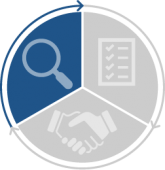What to know
Public health responses become part of the community's ongoing experience of the situation. This may create positive or negative secondary impacts on stress. Try to minimize or prevent negative effects.

Overview
Recognize's primary objective: Understand that all public health responses to environmental contamination become part of the community's 'secondary impact' experience.
Secondary impact
Secondary impacts are separate from potential direct health effects of the contamination. Instead, secondary impacts refer to the psychosocial impacts on individuals and communities, including:
- Mistrust of public health and other institutions.
- The stigma of living in "contaminated" areas.
- Conflict in local groups about how to define and respond to the problem.
Secondary objectives
"Recognize" also has 2 secondary objectives:
- Legitimize the stress experience.
- Communicate risk effectively.
Legitimize the stress experience
Acknowledge that stress is a normal response to being exposed to and living with chronic environmental contamination (CEC). Doing so will help validate community members' experiences. It may be the first step in gaining or regaining a person's or community's trust.
Do not attempt to diagnose or treat individuals for mental health conditions. Educating local behavioral and mental health professionals about CEC is useful. However, don't assume community members want or need mental health assistance after environmental contamination. Some may mistrust or feel stigmatized by mental health labels.
Communicate risk effectively
Intervening individuals speaking in public should be familiar with basic principles of effective risk communication and the importance of cultural sensitivity. Examples include CDC's Crisis and Emergency Risk Communication and ATSDR's Communication Toolkit. Avoid any language that might inadvertently blame the victim or dismiss concerns.
Negative secondary effects
It is important to minimize or prevent negative secondary effects. Continually evaluate how public health actions are either reducing or elevating psychosocial impacts and improve actions accordingly.
Public health professionals and other representatives of intervening institutions should be aware of their power to help or worsen the situation. Institutional delegitimization can be minimized if professionals interacting with the community legitimize the stress experience and communicate risk effectively.

